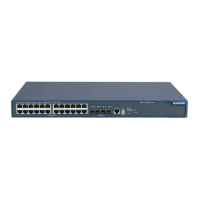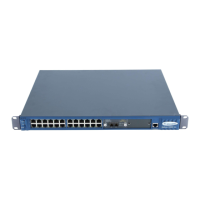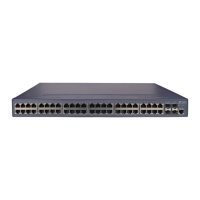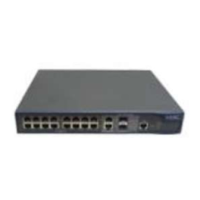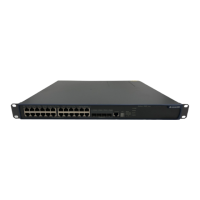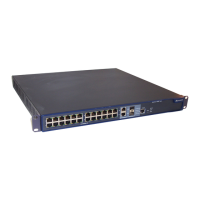Command Manual – Routing Protocol
Quidway S3900 Series Ethernet Switches-Release 1510 Chapter 3 OSPF Configuration Commands
Huawei Technologies Proprietary
3-21
3.1.19 display ospf lsdb
Syntax
display ospf [ process-id ] [ area-id ] lsdb [ brief | [ asbr | ase | network | nssa |
router | summary [ ip-address ] ] [ originate-router ip-address | self-originate ] ]
View
Any view
Parameter
process-id: OSPF Process ID. If you do not specify a process ID, this command applies
to all current OSPF processes.
area-id: OSPF area ID, which can be a decimal integer (ranging from 0 to 4294967295)
or in the form of an IP address.
brief: Displays brief database information.
asbr: Displays the database information about Type-4 LSAs (summary-Asbr-LSAs)
advertised by ASBR routers.
ase: Displays the database information about the Type-5 LSAs (AS-external-LSAs).
This argument is unavailable if you have provided a value for area-id.
network: Displays the database information about the Type-2 LSAs (network-LSAs).
nssa: Displays the database information about the Type-7 LSAs
(NSSA-external-LSAs).
router: Displays the database information about the Type-1 LSAs (router-LSAs).
summary: Displays the database information about the Type-3 LSAs
(summary-net-LSAs).
ip-address: Link state identifier (in the form of an IP address).
originate-router ip-address: Specifies the IP address of the router advertising the
LSAs.
self-originate: Displays the database information about the LSAs generated by the
local router (self-originate LSAs).
Description
Use the display ospf lsdb command to display the database information about OSPF
connecting state.
Example
# Display the database information about OSPF connection state.
<Quidway> display ospf lsdb
OSPF Process 1 with Router ID 1.1.1.1

